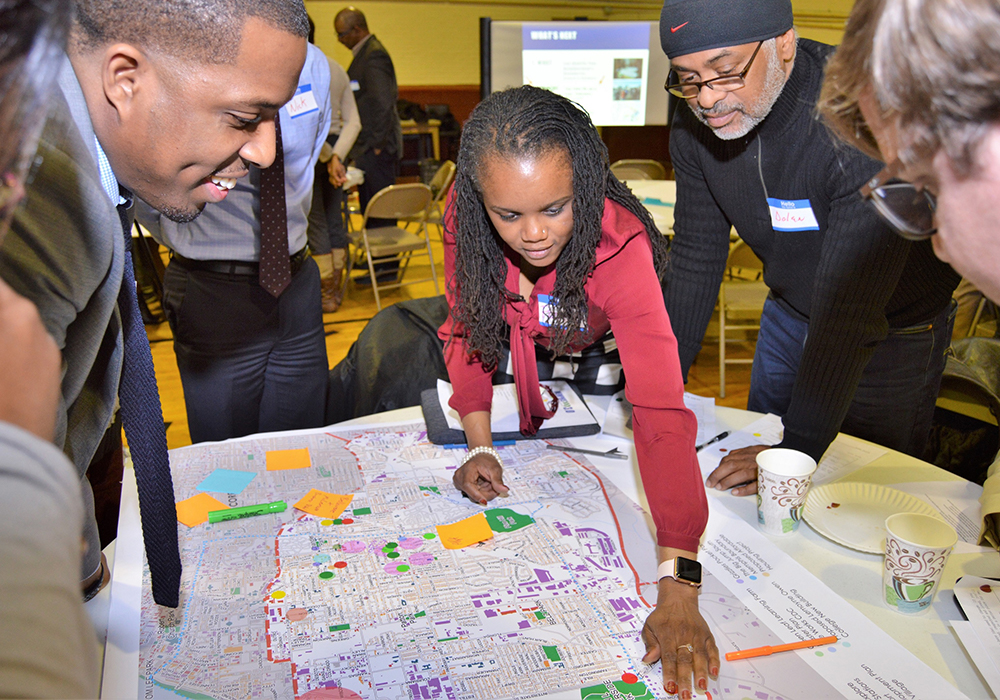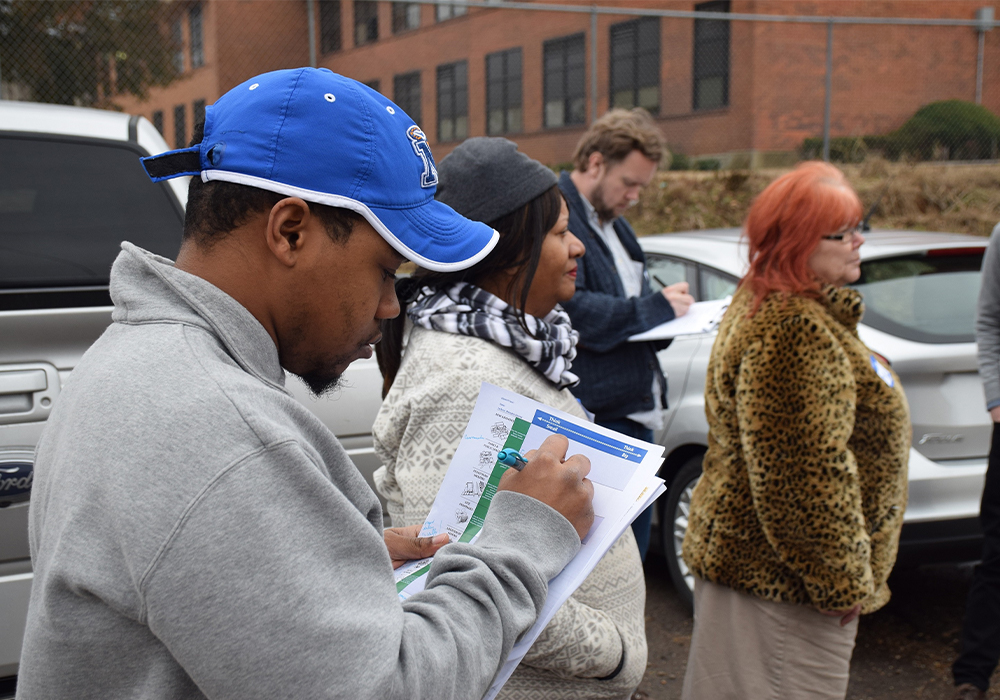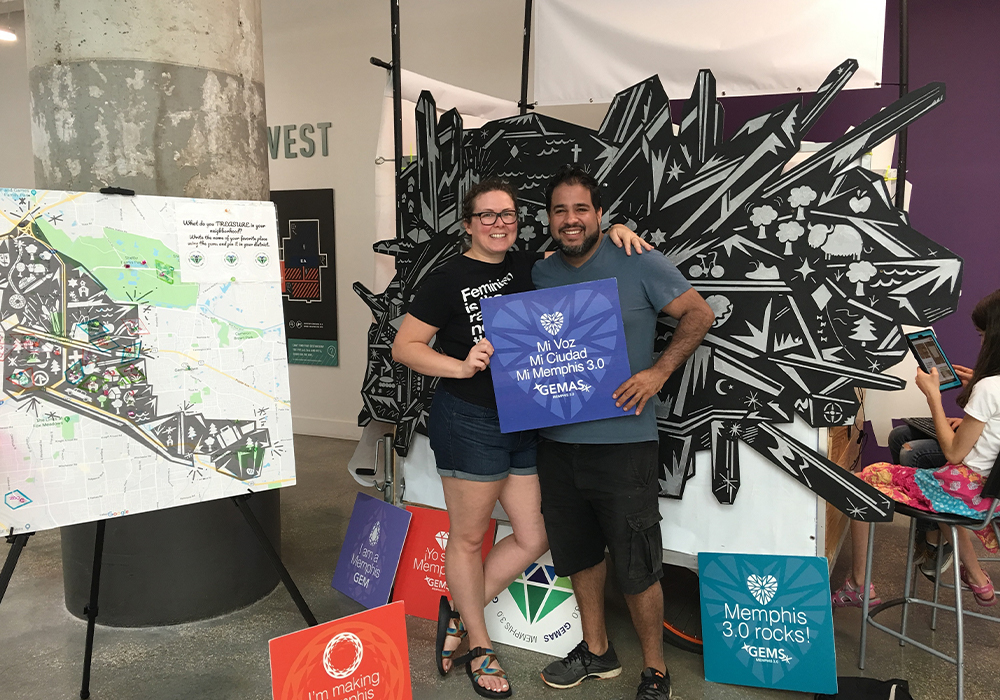Daniel Burnham Award for a Comprehensive Plan
Memphis 3.0 Comprehensive Plan
Memphis, Tennessee
Memphis's First Comprehensive Plan Since 1981
For nearly 40 years, Memphis, Tennessee, lacked a comprehensive plan. Without a plan to map out the city's vision for growth and development, the city drifted into the 21st century with an outdated model of growth by sprawl and annexation.
Without an established culture of planning, Memphis struggled to identify a single community vision with broad public support. In November 2016, the city began developing the Memphis 3.0 Comprehensive Plan to reimagine a vision for the city's future.
Adopted unanimously by the Memphis and Shelby County Land Use Control Board in February 2019, the result is a national model for planning the developed city that focuses on flexibility and enabling the growth of urban assets.
The plan's success is recognized with the 2020 Daniel Burnham Award for a Comprehensive Plan.
Background
While the Memphis area grew outward, older areas within the city lacked investments as already limited resources had to stretch further. Like other medium-sized cities across the country, the suburban sprawl and urban disinvestment of the last several decades resulted in a flat population by seemingly boundless physical expansion.
In November 2016, when the development of the Memphis 3.0 Comprehensive Plan began, the in-house planning team faced the monumental task of educating the general public about the planning profession. What is planning? How does it work? What does a comprehensive plan even do?
Armed with little to no existing resources in an area where planning has not historically been understood or embraced, Memphis planners sought to shift the focus of planning to "build up, not out." Success would depend heavily on community engagement to establish a long-term culture of planning founded on public trust.
Process
The story of Memphis 3.0 begins before the plan itself — with a grassroots effort to find funding. Though the planning division had been charged with developing a new comprehensive plan, the city had eliminated long-range planning staff in 2009.
Unable to depend solely on funding from city hall, planners needed to find alternative investments from philanthropic and business leaders. The $2 million ask was condensed into three primary needs: build the team, involve the community, and bring in expertise.
The initial funds raised were used to create the six-member Office of Comprehensive Planning. The team of planners worked both in the community and in city hall to promote the Memphis 3.0 plan, but also the value of the planning profession.
The City of Memphis funded nearly 50 local organizations, many of which were staffed by planners, to increase plan awareness. Committed to reaching as many underrepresented groups as possible, the team held neighborhood walking tours, hosted over 400 public meetings, partnered with trusted community organizations, and worked with local artists to better communicate the importance of a new comprehensive plan. The city partnered with the University of Memphis's graduate program to get the next generation of planners involved in plan development and community awareness.
Thanks to these innovative engagement efforts, over 15,000 Memphis residents participated in a multi-phase vision and goal-setting process.

Residents of the South District map assets, challenges, and opportunities for new growth in the first of three planning workshops for each district. Photo courtesy City of Memphis.
After evaluating three growth scenarios, community members prioritized new population and employment growth throughout the city's downtown area and neighborhood centers. A focus on community character, walkability, and anticipated investment proved most important for Memphians.
The plan accommodates those needs by focusing growth around pedestrian-oriented "anchors." In addition to defining anchor environments in terms of community character, anchors are also classified by their respective degree of change over time: "accelerate" for areas that can absorb growth more rapidly; "sustain" for areas that have reached maturity in character; and "nurture" for areas that need investment to stabilize and support community assets and protect affordable housing.
These anchors, or walkable centers of activity, would adapt to accommodate new populations and anticipated development while remaining true to the neighborhood's distinct character. Anchors across the city could then be connected by more frequent and accessible transit options.

Community tour participants in the Jackson District record ideas for changes in the public realm near an elementary school. Photo courtesy City of Memphis.
Results
The plan achieved was unanimously adopted in February 2019. In May, Memphis Mayor Jim Strickland drafted an executive order adopting the plan and directing each division and agency of city government to work together in implementing it. In December, the plan was adopted by the Memphis City Council.
In addition to the plan's prevalence in everyday leadership decisions, city council also approved the creation of two plan-recommended funds: The Affordable Housing Trust Fund and the Community Catalyst Fund. Both are intended to support growth in key areas of the city by providing investment in anchors and anchor neighborhoods.
With its "all-hands-on-deck" approach to combatting urban sprawl, Memphis 3.0 serves as a roadmap guiding the city's investment for years to come. The plan's success has also created a long-term culture of planning built on community trust and support. Despite starting with no long-range planning staff, little funding, and a decades-old model for growth, the City of Memphis managed to involve thousands of residents in building an intentionally inclusive and equitable comprehensive plan.
The planning team took several years to engage and educate the community so that the people of Memphis could put their experiences and hopes for the future not just into words, but into a plan.

Plan participants interact with artist Yancy Villa Calvo's Go Explore Memphis Soul (GEMS) community input exhibit. Photo courtesy City of Memphis.


